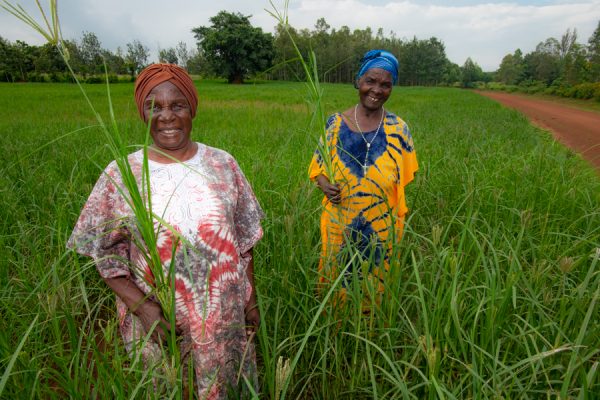Finger Millet
Eleusine coracana L. Gaertn test
Finger millet (Eleusine coracana) is an annual cereal high in calcium, zinc, iron, dietary fiber, phytates and protein. The crop is widely cultivated in Africa and South Asia, and used for producing beer, porridge, soups, bread, cakes and pudding.
Wild Relatives
Cultivated finger millet is highly variable within its primary centre of origin in Africa and secondary centre in Indian sub-continent. It belongs to the Poaceae family, Chloridoideae sub-family
The species has two subspecies; africana and coracana. Subspecies africana is diploid (2n=18) while subspecies coracana is a tetraploid derived from the diploid subspecies. Finger millet is mostly self-pollinating, with some amount of cross-pollination (1%) mediated by wind.
Both wild finger millet (Eleusine coracana subspecies africana) and the cultivated finger millet (Eleusine coracana subspecies coracana) are important from the point of view of germplasm collection and conservation and form the primary genepool. Wild finger millet (subspecies africana) is native to Africa but has migrated to several warmer parts of Asia and America. Natural hybridization between wild and cultivated finger millets has resulted in hybrid derivatives and in companion weeds of the crop in Africa. This no doubt has led to the generation of new diversity of intermediate forms. The weedy and wild forms are restricted to the closely related annual species.
The cultivated finger millets have been divided into four races and several sub-races which are mainly based on the inflorescence morphology. Within these races there are hundreds of varieties.
The diploid wild species E. indica, E. floccifolia and E. tristachya form the secondary genepool and the tertiary genepool comprises species E. intermedia, E. gaegeri, E. kigeziensis, E. multiflora and E. semisterlis (E. compressa).
Collecting
Collecting Projects
Finger millet was domesticated about 5000 BP in the highlands of East Africa, and later spread into the tropics of Central and East Africa. The crop was later introduced to India around 3000 BP.
Use
Productivity of finger millet in East Africa is very low at about 1.3 t/ha in comparison to its potential of over 10 t/ha.
This project is aims to address the low productivity of finger millet in East Africa through the use of wild relatives. Wild finger millet relatives, abundant in the region, can be potential sources of valuable traits to improve overall productivity. The introgression of adaptive traits, such as drought tolerance, blast and Striga resistance, and superior nutritional quality from wild finger millet accessions into farmer-preferred varieties is the main focus. A collection of wild finger millet accessions already available at ICRISAT-Nairobi and Maseno University will be used in this project.
It is expected that by the end of the project, at least three inter-specific mapping populations will have been developed, specific backcross populations generated, and phenotypic and molecular information developed. This project will directly benefit breeders from the participating institutions and the finger millet breeding community as a whole. Subsequent beneficiaries will be farmers and consumers, majority of whom are women.
Germinate is an open source plant database infrastructure and application programming platform developed by the James Hutton Institute. It stores complex data from genetic resource collections and allows them to be queried and visualized using common, reusable, programming components. Germinate utilizes web and database standards to provide a common architecture and high performance web-based user interface and analytics functionality across a wide variety of data types including: passport, phenotypic, field trial, pedigree, genetic, climatic, geographic location data as well as user-submitted annotations.
Finger millet data will be shared on Germinate commencing in 2019.
Pre-breeding Project
Collections
Genesys displays information for over 8,000 finger millet accessions. About 70% of these accessions are landraces, while less than 2% are wild relatives. The International Crop Research Institute for the Semi-Arid Tropics (ICRISAT) maintains the largest finger millet collection, with 6,757 accessions.
A global conservation strategy of finger millet and its wild relatives was published in 2012.
COLLECTING PARTNERS
- Ethiopian Biodiversity Institute (EBI)
- Instituto Nacional de Innovacion Agraria (INIA, Chile)
- National Agricultural Research Organization (NARO)
- National Agriculture Genetic Resources Center (NAGRC - Nepal)
- Embrapa Genetic Resources and Biotechnology
- Plant Genetic Resources Research Institute (PGRRI, Ghana)
- Kenya Agricultural and Livestock Research Organization (KALRO, Kenya)
- National Centre for Genetic Resources and Biotechnology (NACGRAB)
- Plant Genetic Resources Institute (PGRI - Pakistan)


